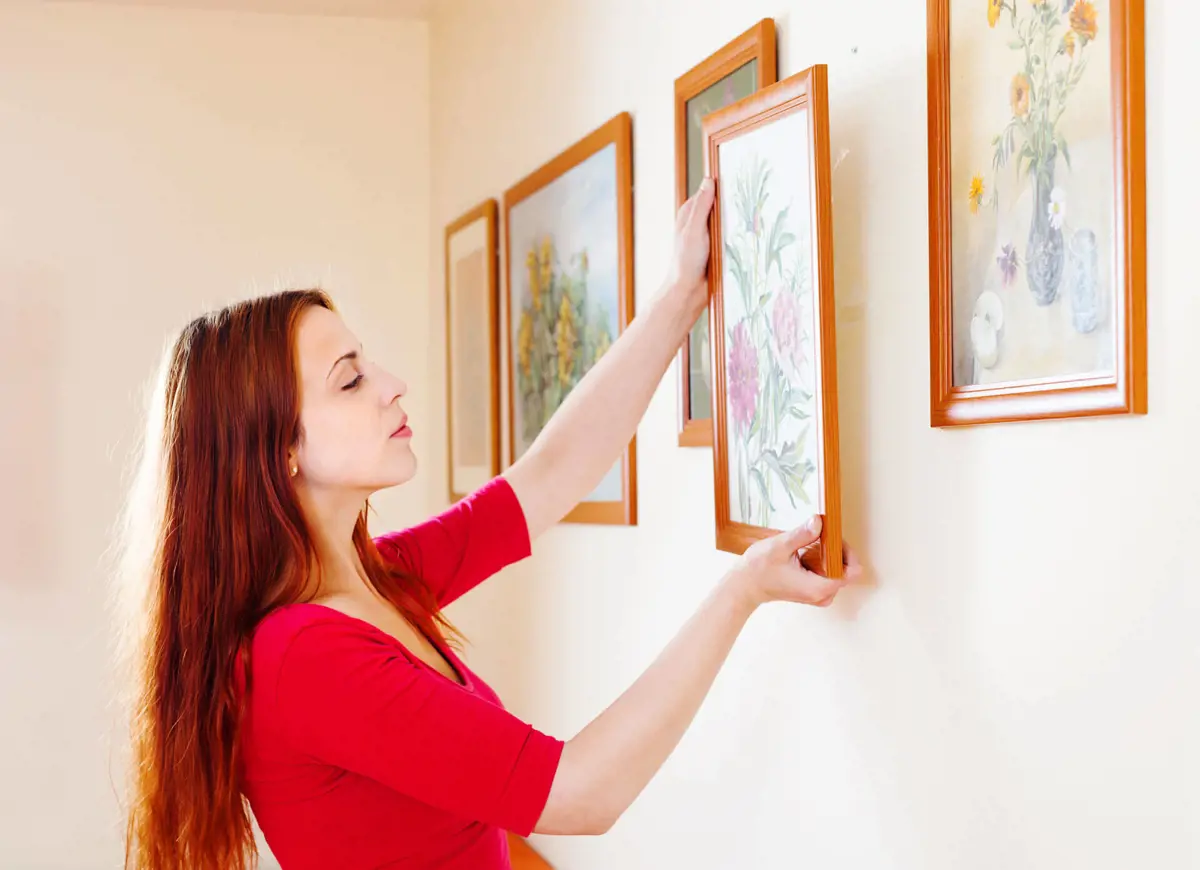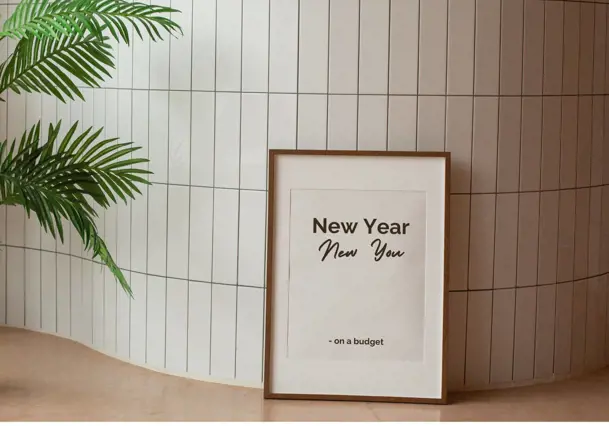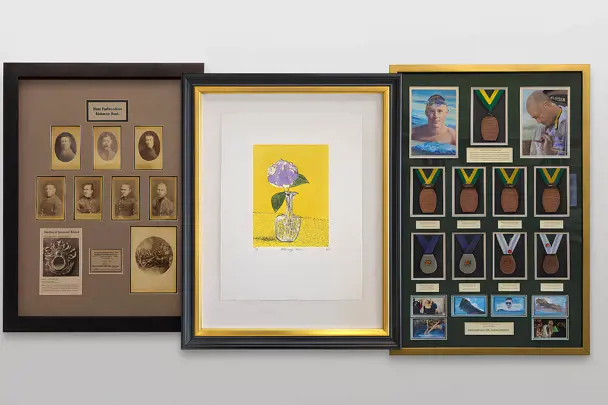Once you’ve received your expertly framed piece, it’s time to proudly hang it in its final destination. For many of us, this poses the greatest challenge yet.
Whilst correctly attaching a frame to your wall demands attention to detail and a bit of handiwork, it’s usually a lot easier than it may seem. When attaching your frame, the priority should always be protecting the wall it’s about to hang from as well as your frame. If you’re looking to safely and securely attach your new frame to painted walls, here’s a few tricks and tips from our years of experience.
Why take care when attaching a frame to a painted wall
Painted walls and professional frames are a perfect match. Together, they easily enhance your blank painted walls with the addition of framed artwork, photography or memorabilia.
Whether you’re a renter or owner, maintaining the walls of any space is always important. By taking care during the hanging process, you don’t run the risk of damaging, scratching or chipping the paint. This lets you easily change the piece up or take the piece down to preserve the wall.
There are a few ways to go about attaching frames to painted walls. The right approach will likely come down to your level of handy skills, your wall materials as well as the weight of your frame. Without using the right process, you can end up damaging your wall, from chipping the paint to leaving a hole in the plasterboard.
How to attach frames to painted walls
When it comes to attaching frames to painted walls, there are a few methods available. As framing specialists, we always recommend chatting with our friendly team to find the best plan for you and your piece. They can give you recommendations and tips, so you get the most out of your frame investment.
Make a Plan
Whilst having the tools and products you need is essential; it can also be important to plan out how you want your frame to look on your wall. With painted walls especially, you want to limit the dents and drill holes on your walls. This makes it critical to get right the first time.
If it’s just one frame being hung, use a tape measure to help centre your piece and find the prime position to attach to the wall. For a gallery wall, you should start by organising how you want your frames to be arranged. Do this by using a table or the floor to play around and find the right arrangement of your frames. Then, use masking tape to outline each piece on the wall to give you a realistic guide for once you’re on the tools.
Sticky strips and hooks
Sticky strips and hooks like command hooks are definitely the easiest and most convenient option for attaching frames to painted walls. Quality sticky strips have been designed to protect the paint it sticks to and avoid chipping. With a simple process of stick, hold and hang, this approach is great for smaller frames that are light. By not penetrating the wall, they’re also perfect for renters who want to leave minimum impact.
It is important to note that the adhesive from sticky strips can sometimes pull paint from the wall once removed. If you find yourself in this position, you will need to repaint the affected area.
Nails
A simple nail is one of the most common ways to attach a frame to your painted walls. By piecing the wall at only one site, a nail just requires the appropriate measuring and stud-checks to be perfected.
Nails are best for frames with a string or wire on the back, that can hook onto the nail and be centred. If your frame is heavier than 36 kg, you’ll need to ensure you find the wall stud to hang it up, so it does not pull out of the plasterboard.
Picture hooks
Frame Today and most general hardware stores sell picture hooks, which have been specifically designed to be inserted into specific wall materials and to support your frame. Accessories like hanging triangles, angle drives and j-hooks are just a few hook options on the market.
Some picture frames require more serious DIY, needing power drills to insert wall plugs. These will leave a noticeable hole in your wall. Whilst this can keep your frame attached and secure, this will damage the paint and require wall filler and repainting if you decide to take down the frame one day.
Hangman Z
For heavier frames, such as large mirrors, paintings or antique frames, it’s likely you’ll need a sturdier tool to keep the frame hanging. The hangman-z is designed to protect both the object being hung and the wall, by using two overlapping brackets.
This device is attached to the wall with screws, providing a long strip for your frame to be attached off. A second strip is attached to the back of your frame. Its aluminium material means it’s light and strong enough to hold major weights and provide an extra protective layer to stop the heavy frame from impacting the wall.
Like with most options, the hangman-z still requires screws to be drilled into the wall to work. Whilst this does require screw holes, screw damage is an easier challenge to fix than the possible frame damage that could happen by using a nail or picture hook that’s not strong enough for the frame.
Phone a friend
When in doubt, handy people are always available to complete this project for you. If you don’t feel confident in your skills, getting professional help ensures your painted wall is paired with the right framing option.
When you pick your frame up, our friendly team will also be able to give you advice as to what method is most suitable for your frame’s size, weight and contents, but you’ll need to know your wall material before making your final selection.
How to fix damages made by frames to painted wall
Despite the best intentions, frames can sometimes cause some damage to painted walls. This tends to be minimal and usually requires a quick fix.
Here are some common damages to painted walls resulting from frames and how to fix them:
- discolouration: paint will naturally fade due to sun exposure. Hanging a frame will protect the wall behind, leaving a shadow once the frame has been taken down. To fix, you will need repaint the wall.
- holes in wall: when using screws, you’ll drill a hole into your painted wall to attach the frame. You will need to refill the hole with putty and then repaint to cover the repair.
- chipped paint: these tiny specks of paint chips can be very inconvenient and are likely the result of knocking the frame against the wall whilst trying to hang it. You’ll need to sand down the surface, refill the small chips and then repaint to get the wall back to its original condition.
Need a Hand?
Our Frame Today consultants are experts in getting the most out of framed pieces and can happily offer advice about how to best attach and hang your frame. From the beginning to the end of your framing journey, our friendly team is always here to help.



